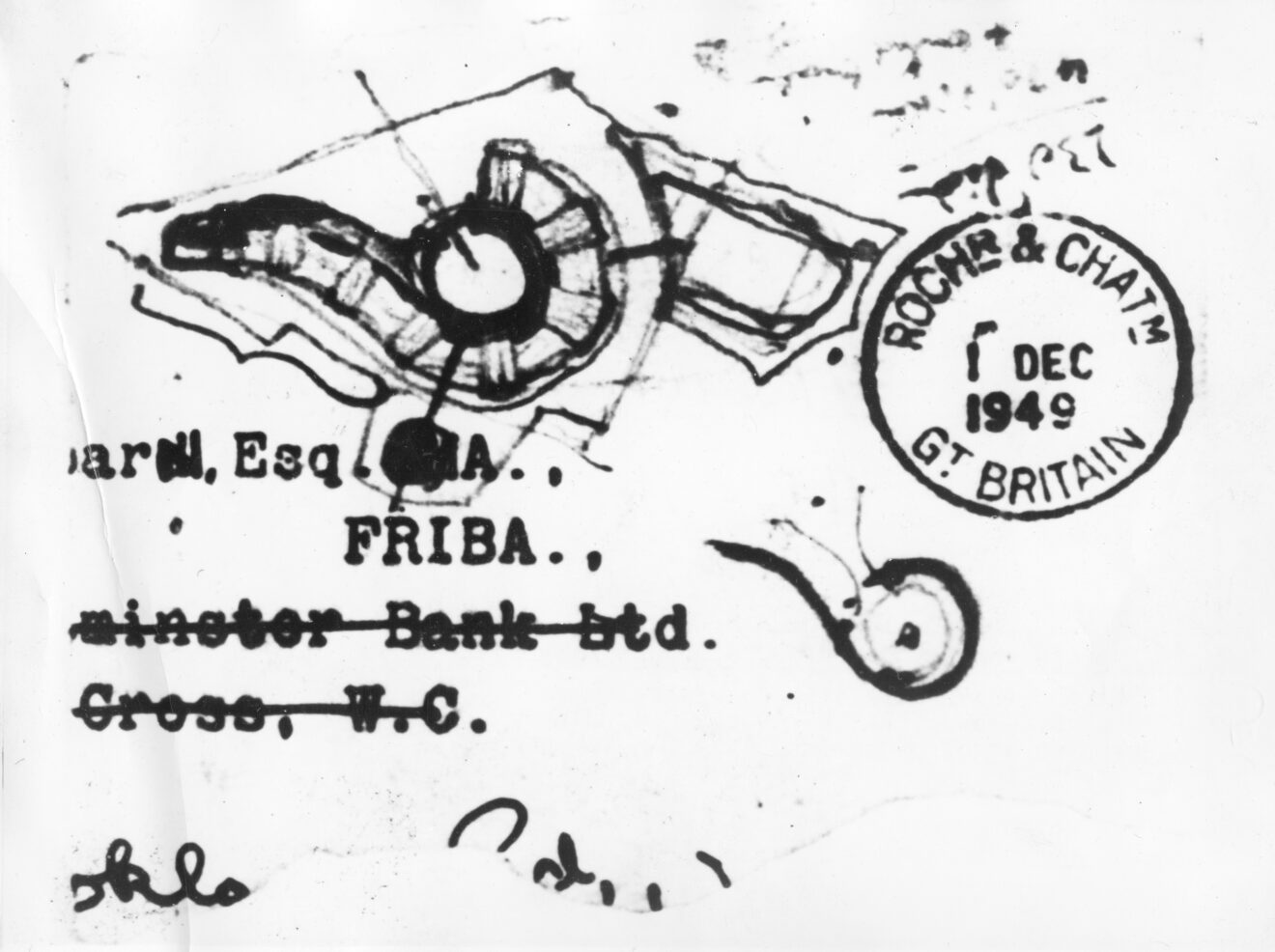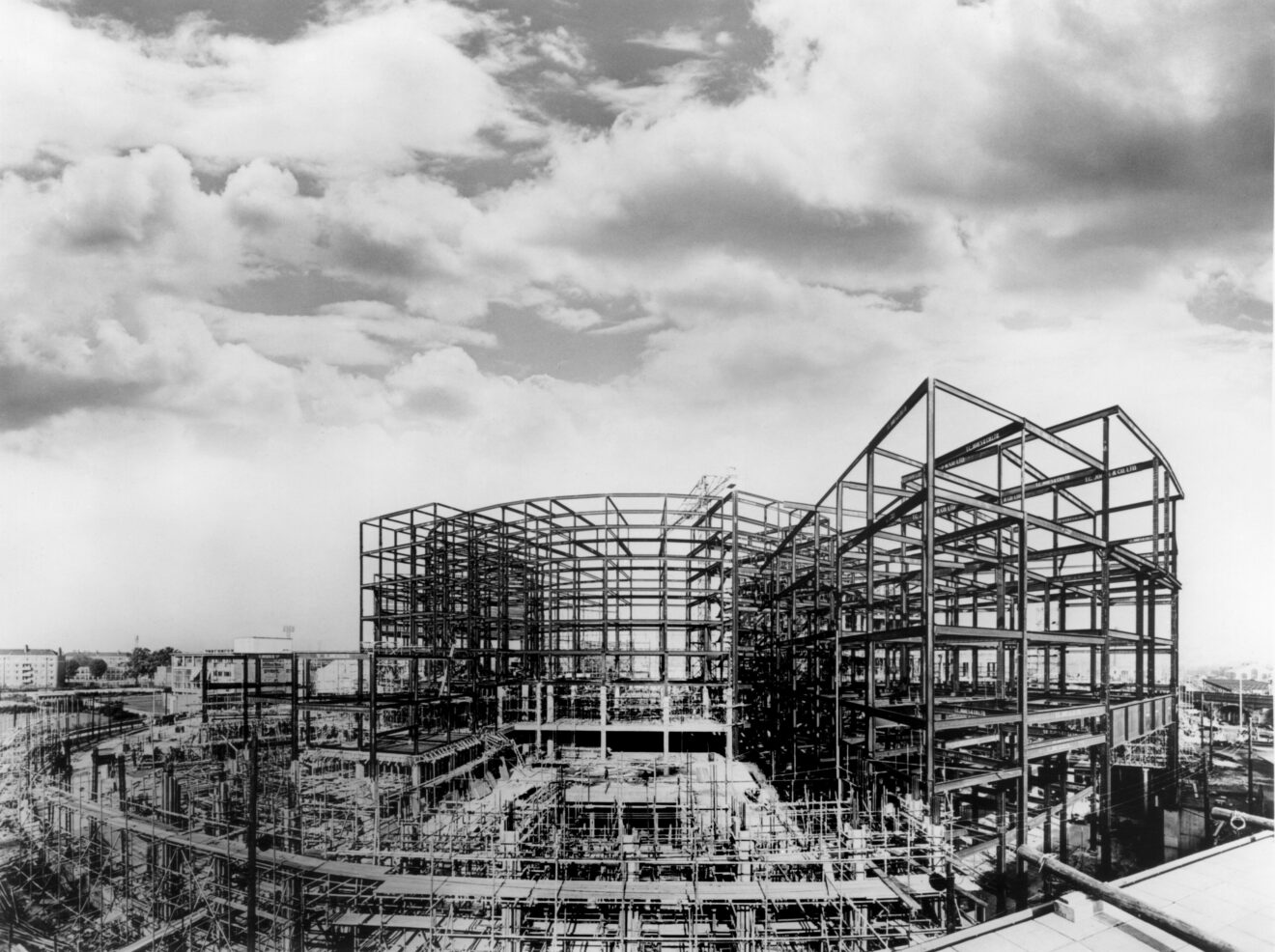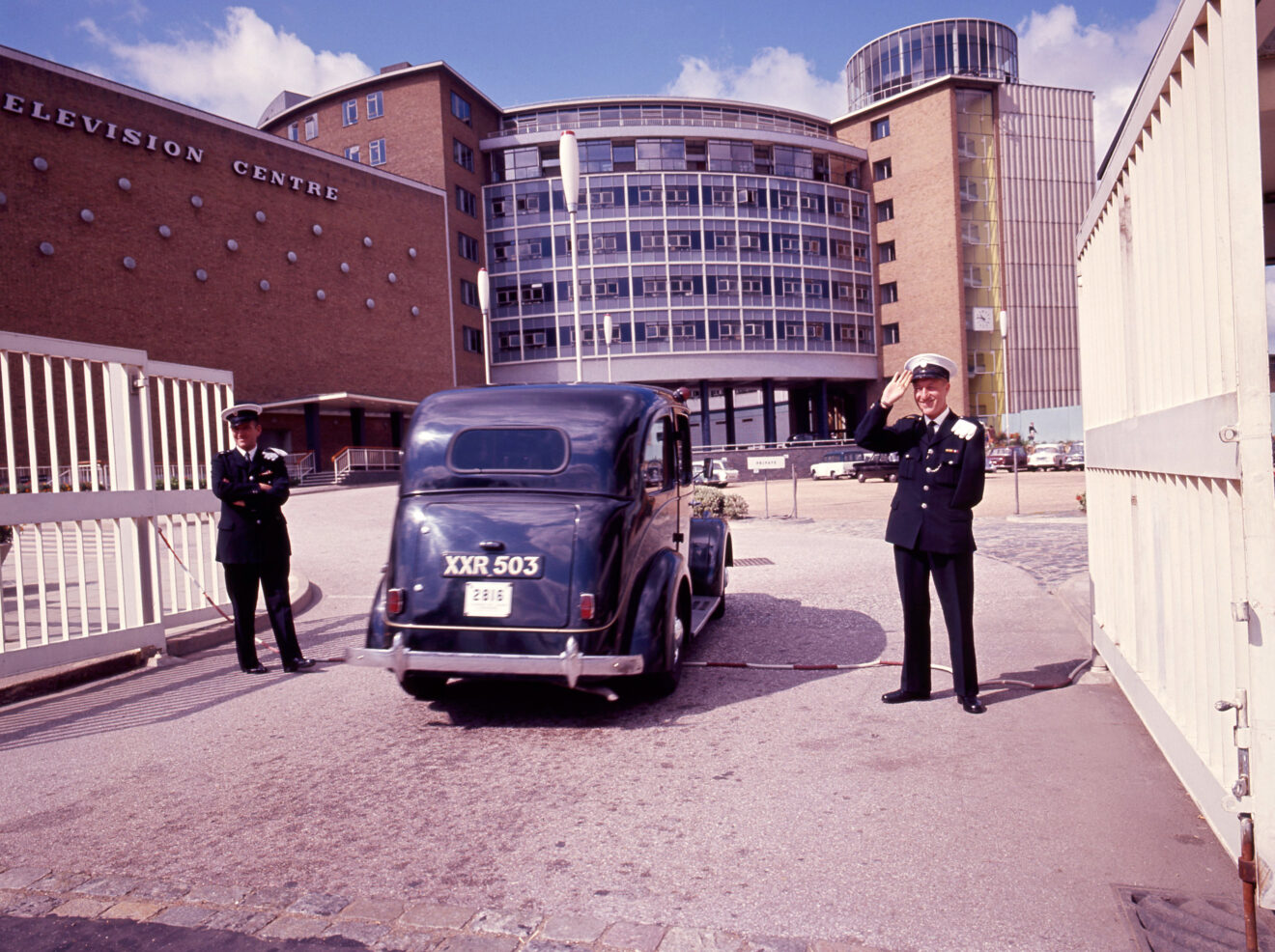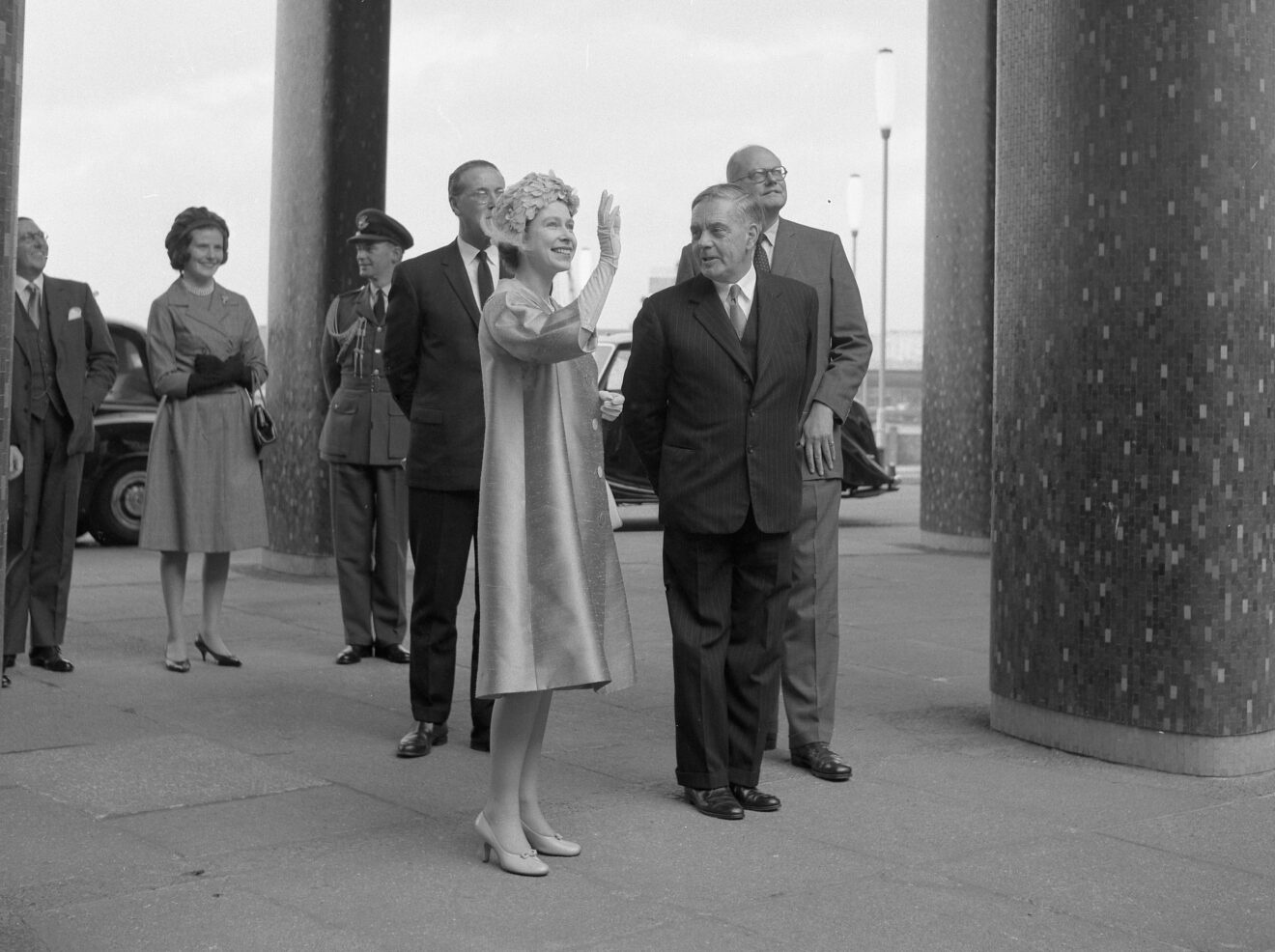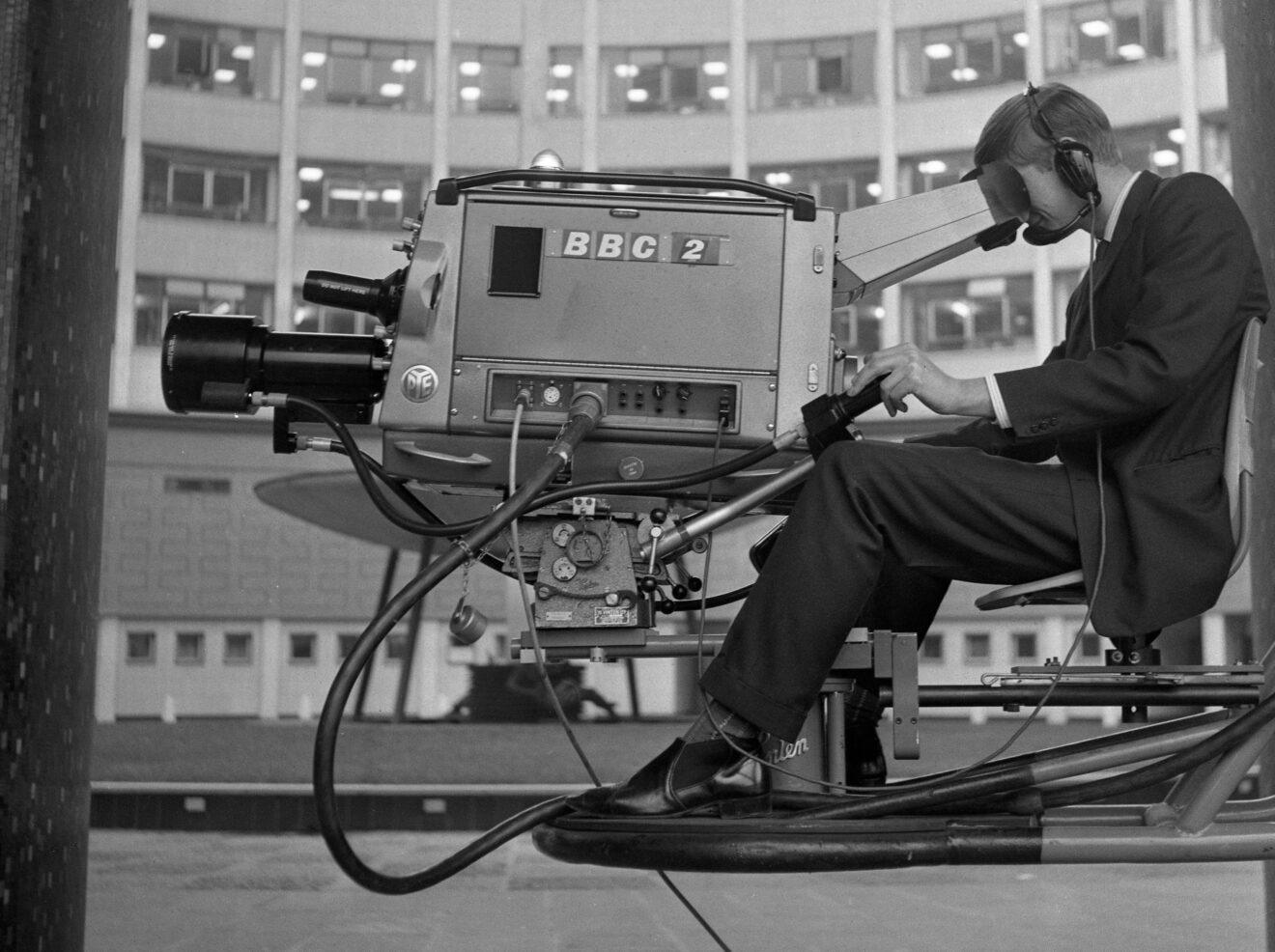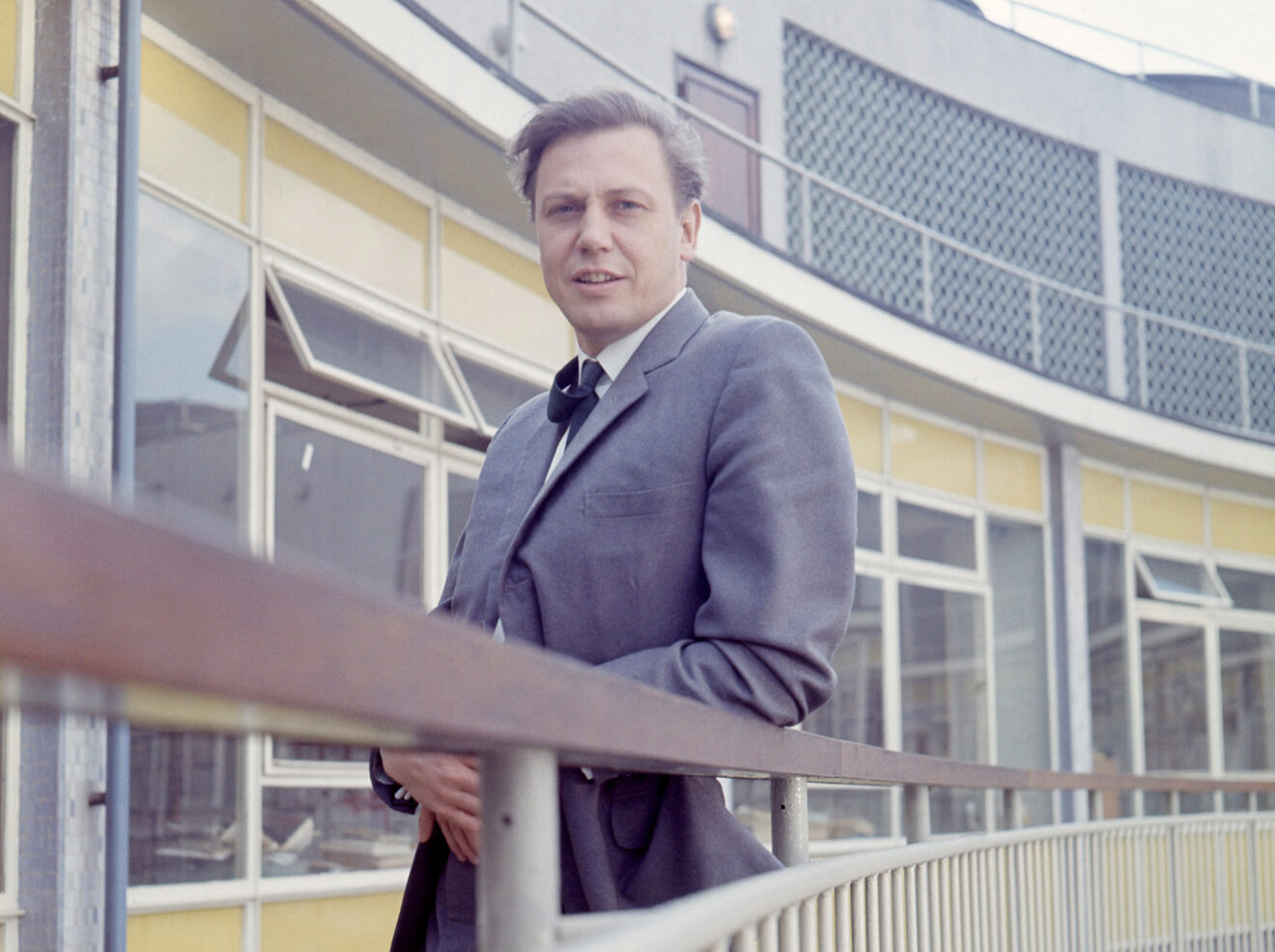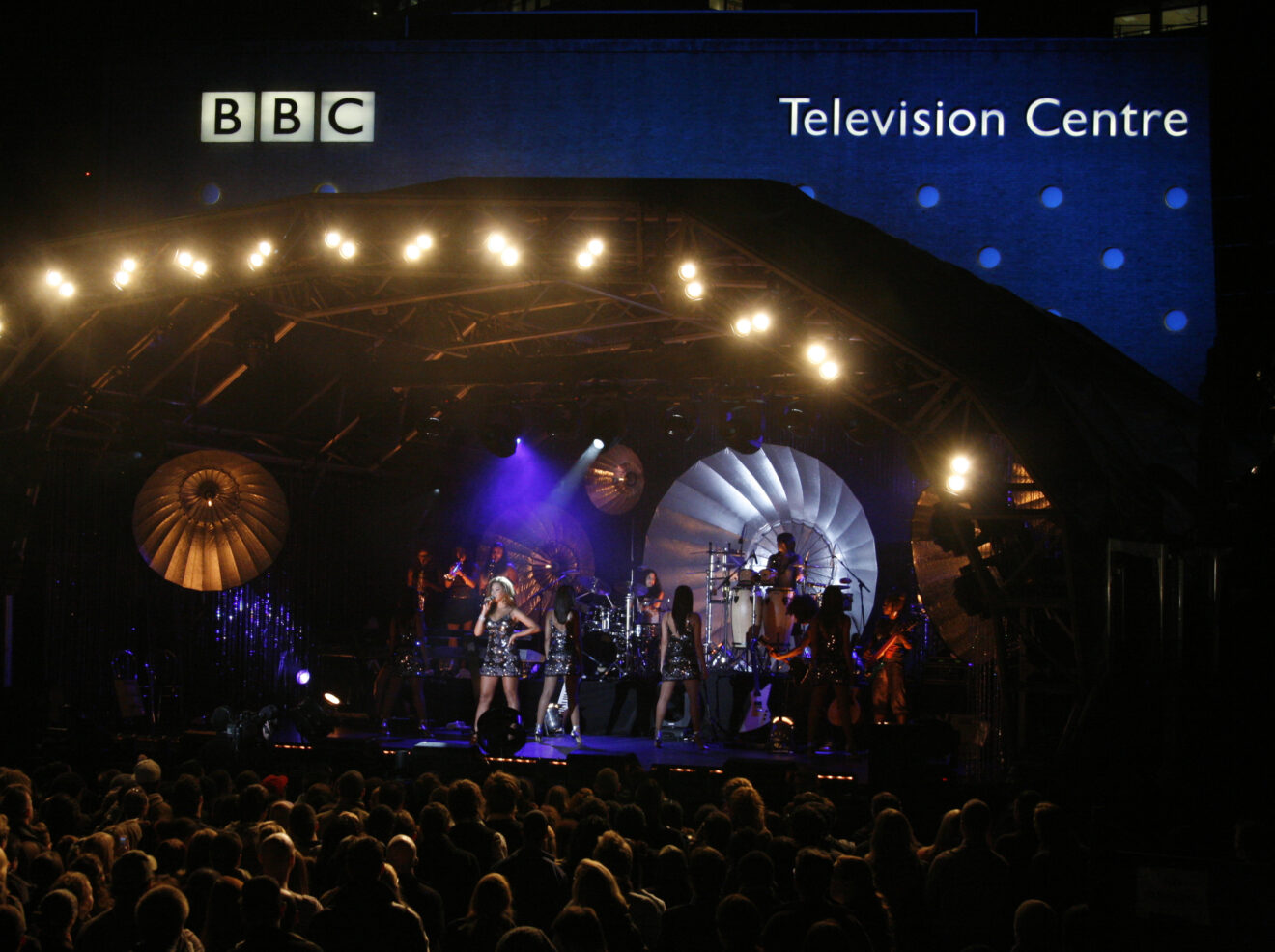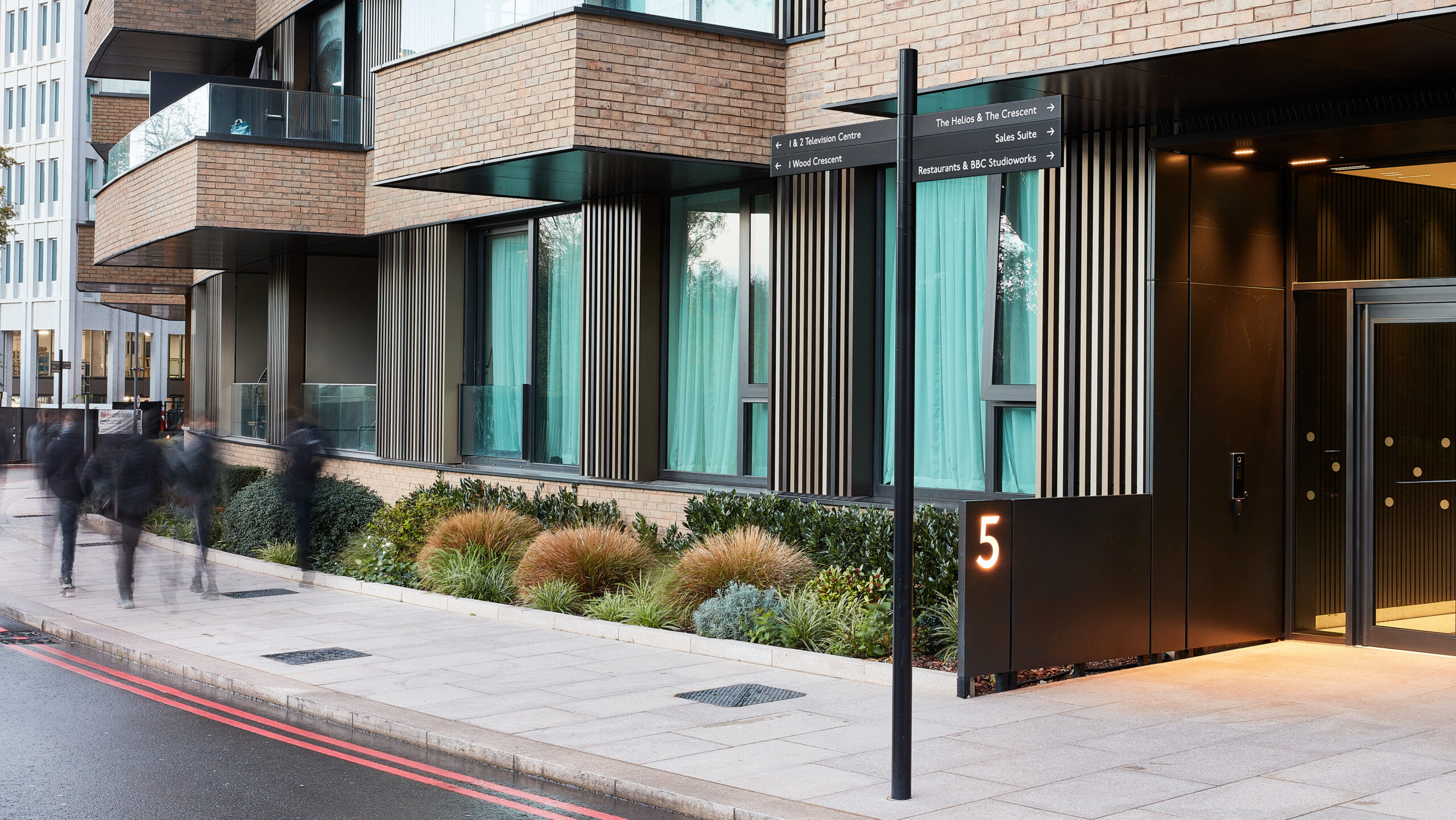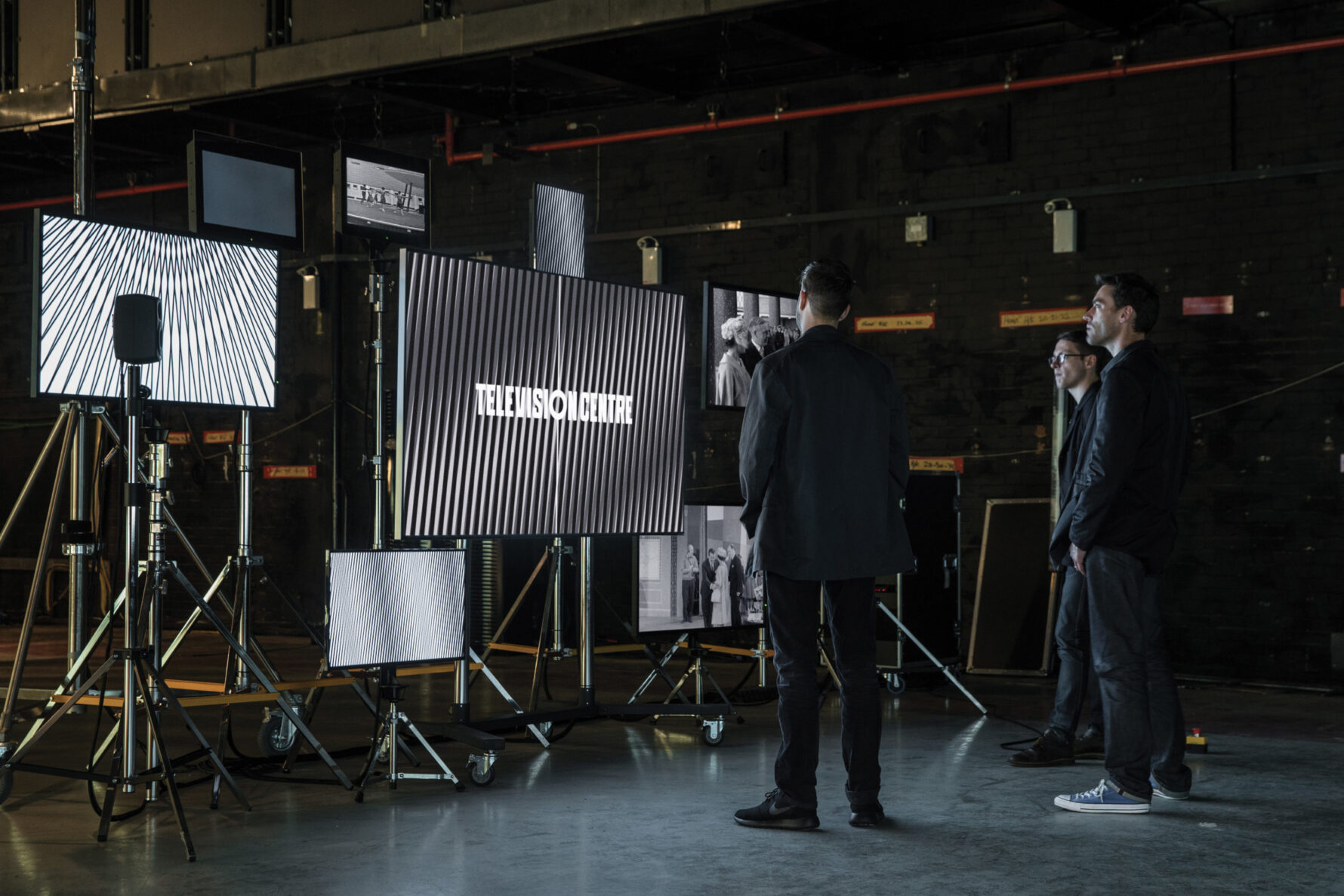Television Centre
Wayfinding
Directing an icon
Television Centre
Wayfinding
Directing an icon

When the former headquarters of the BBC opened up to the public, we created an external wayfinding system to guide people around this icon as it began a new phase in its life.
A family of bold signs, dressed in the building’s famous atomic dots, celebrates its distinctive architectural heritage.
Atomic dots, a surprising national treasure
Legend has it that one of the architects, Arthur Hayes, pushed a series of drawing pins into the side of a foam model to represent the lights that now stick out of the facade of Studio One. Those drawing pins ended up coming to life as the iconic ‘atomic dots’. Our totems proudly display their own atomic dots, recalling an image that would’ve flashed across countless British television screens for decades.
Light plays a central role in the design. LEDs embedded in the majority of signs mean they glow at night, drawing in visitors, diners and revellers and presenting helpful directions. These are then accompanied by a replaceable axonometric drawing of the site that is always ‘heads up’.
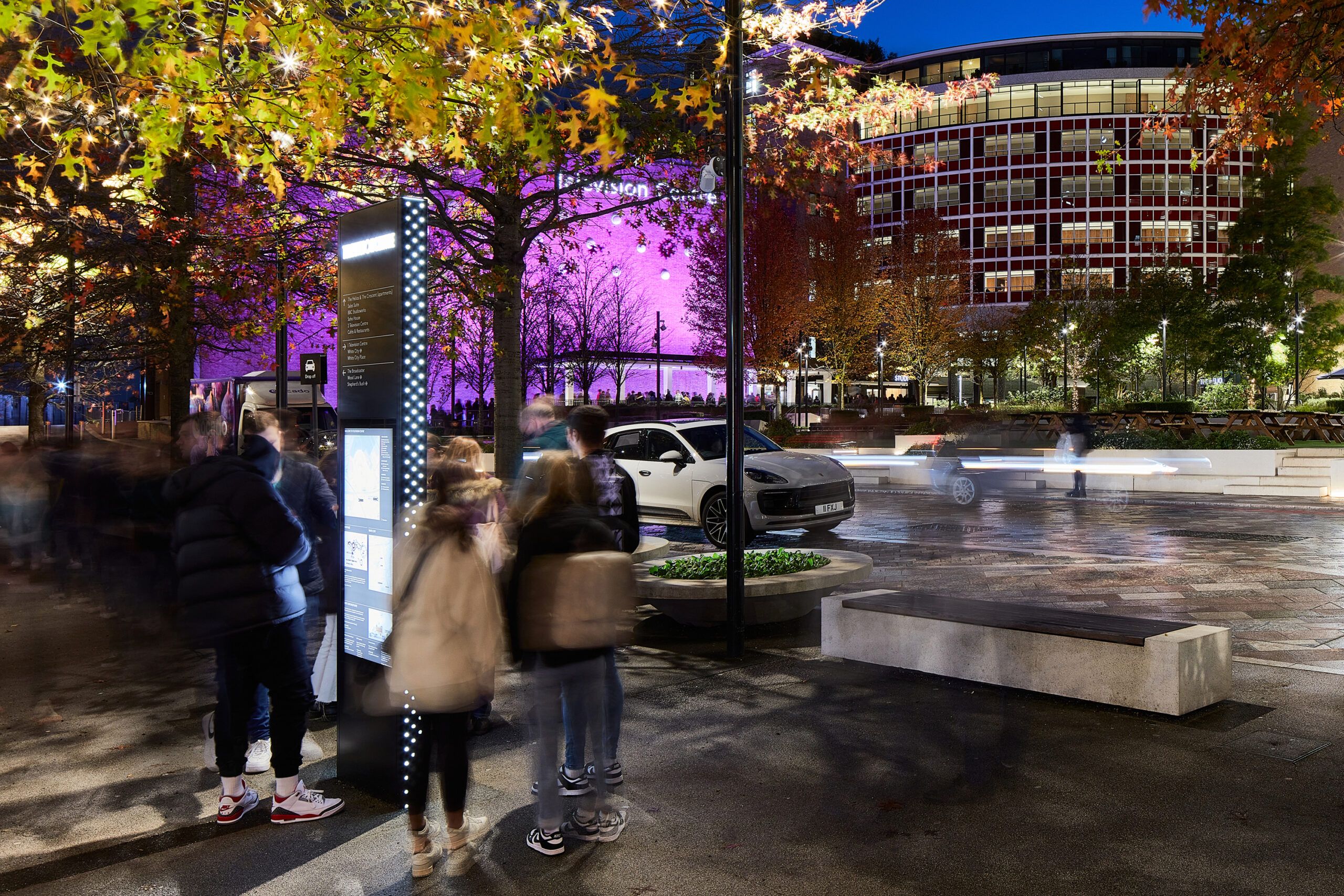
A centre for storytelling
Once the home of British television, we wanted the rich history of Television Centre to continue to be celebrated and so we made space for it — each totem contains carefully chosen archival photographs accompanied by a succinct history that tells the story of a place so famous for storytelling.
